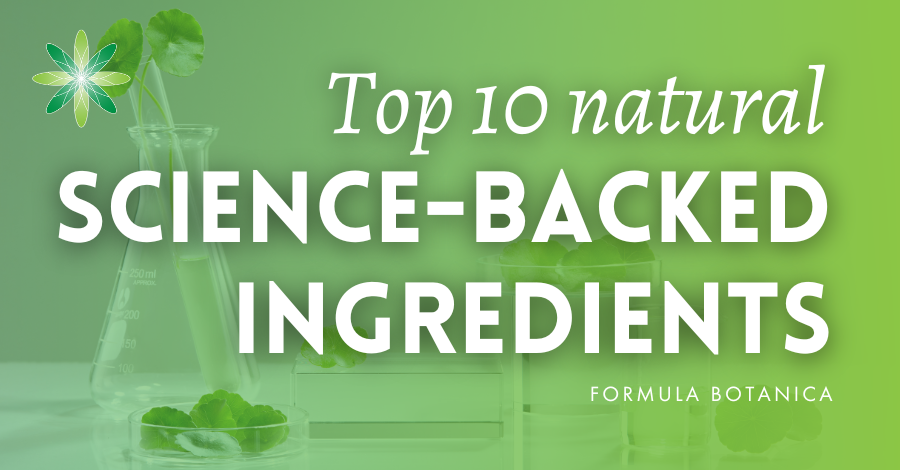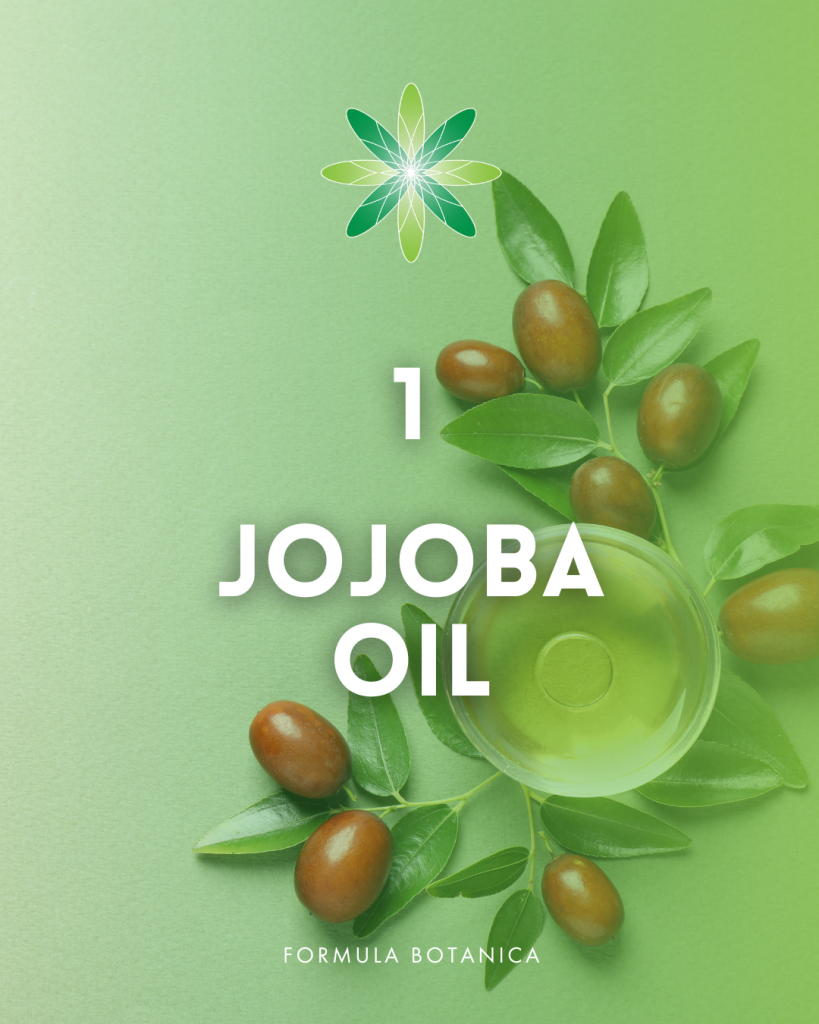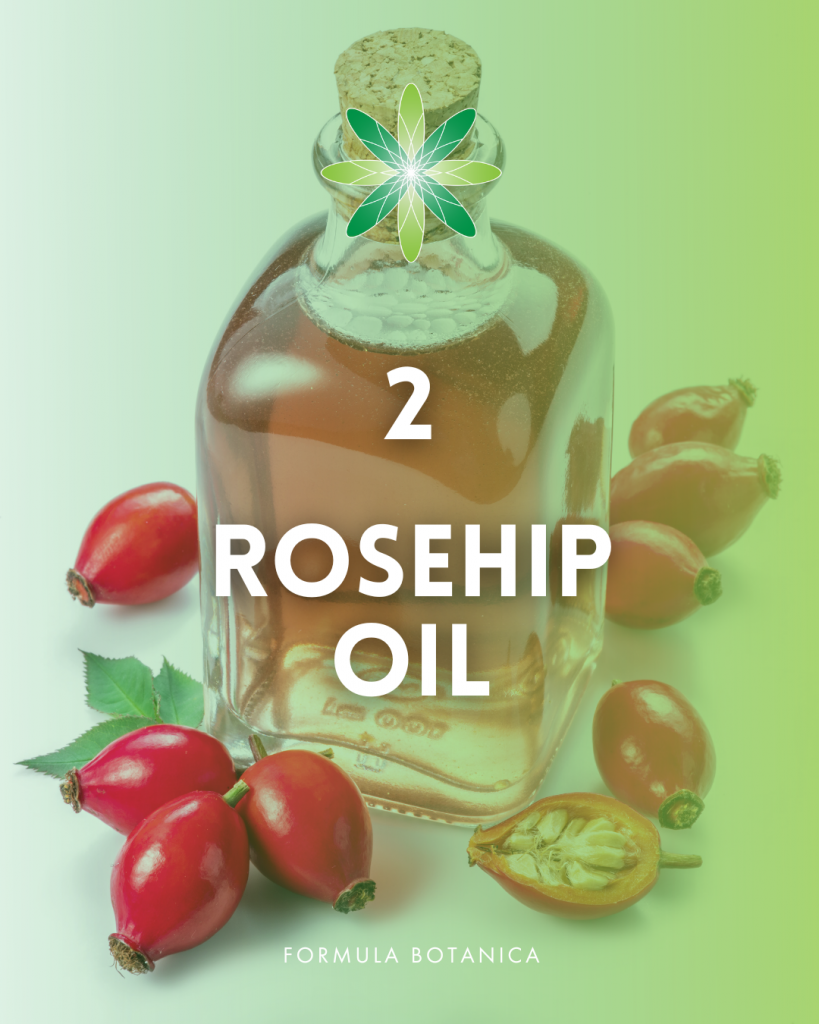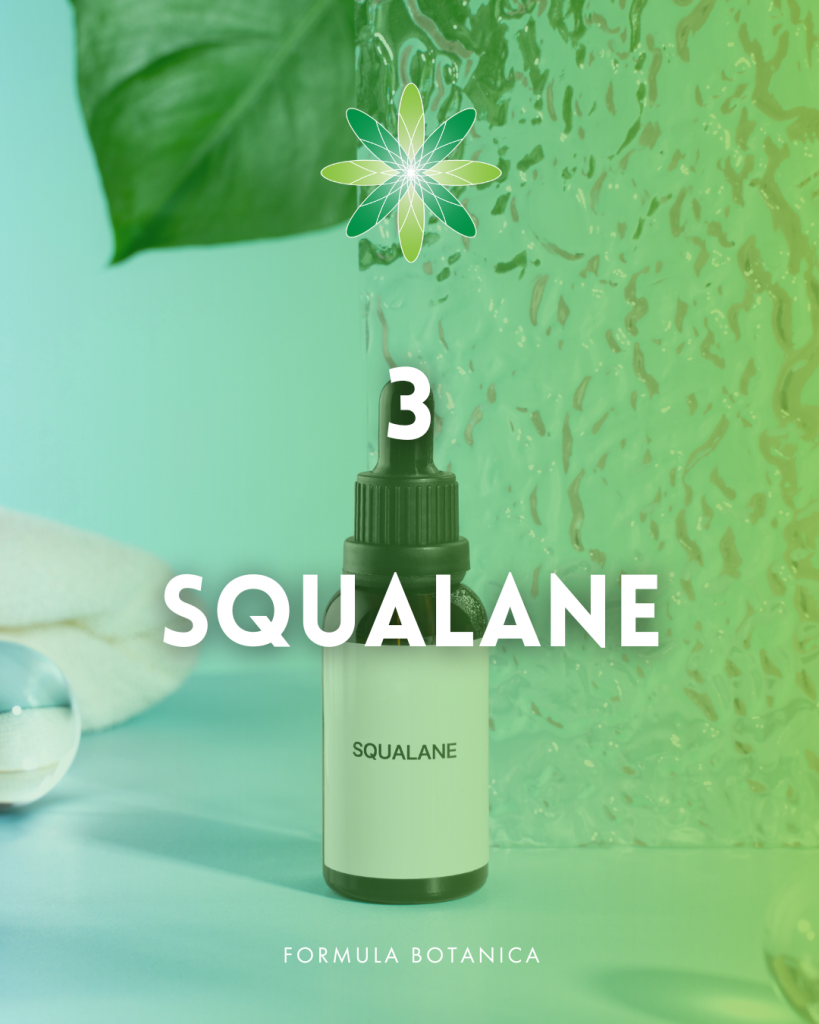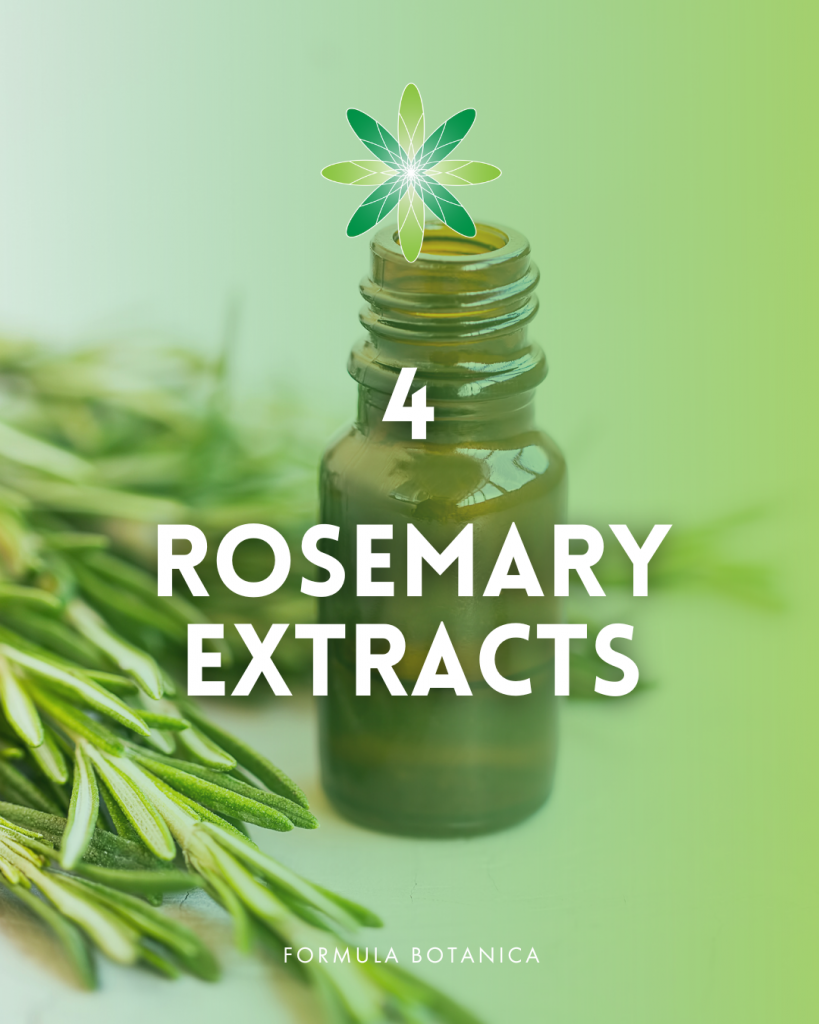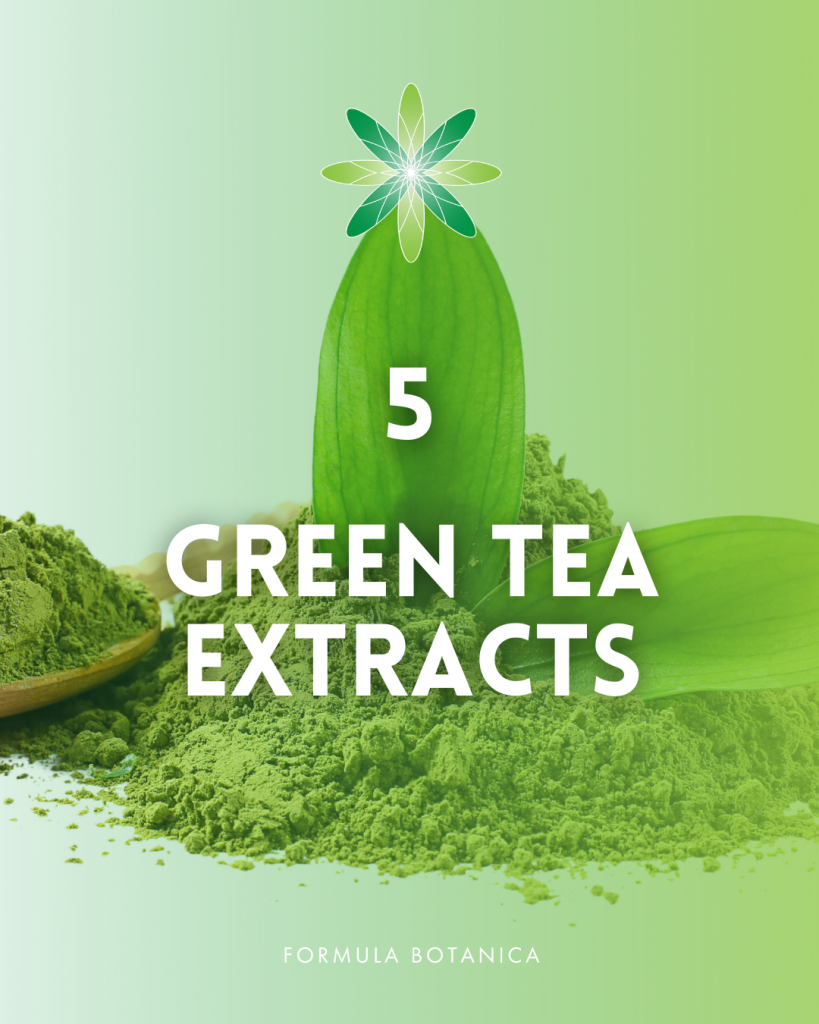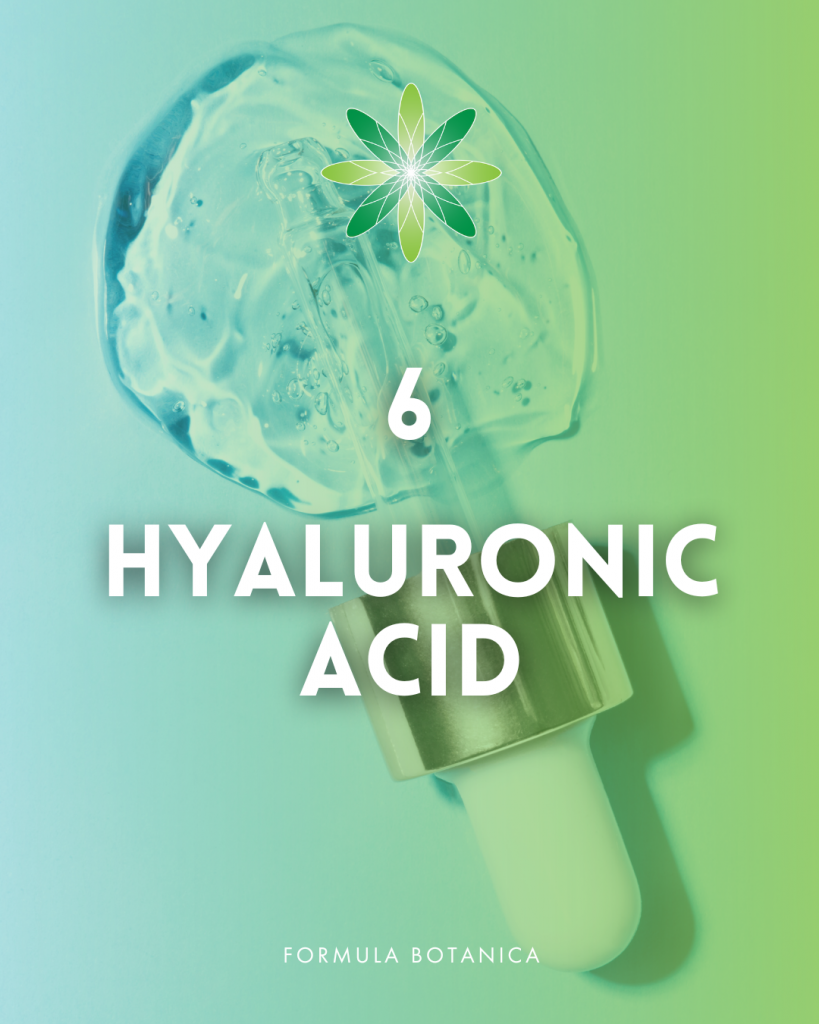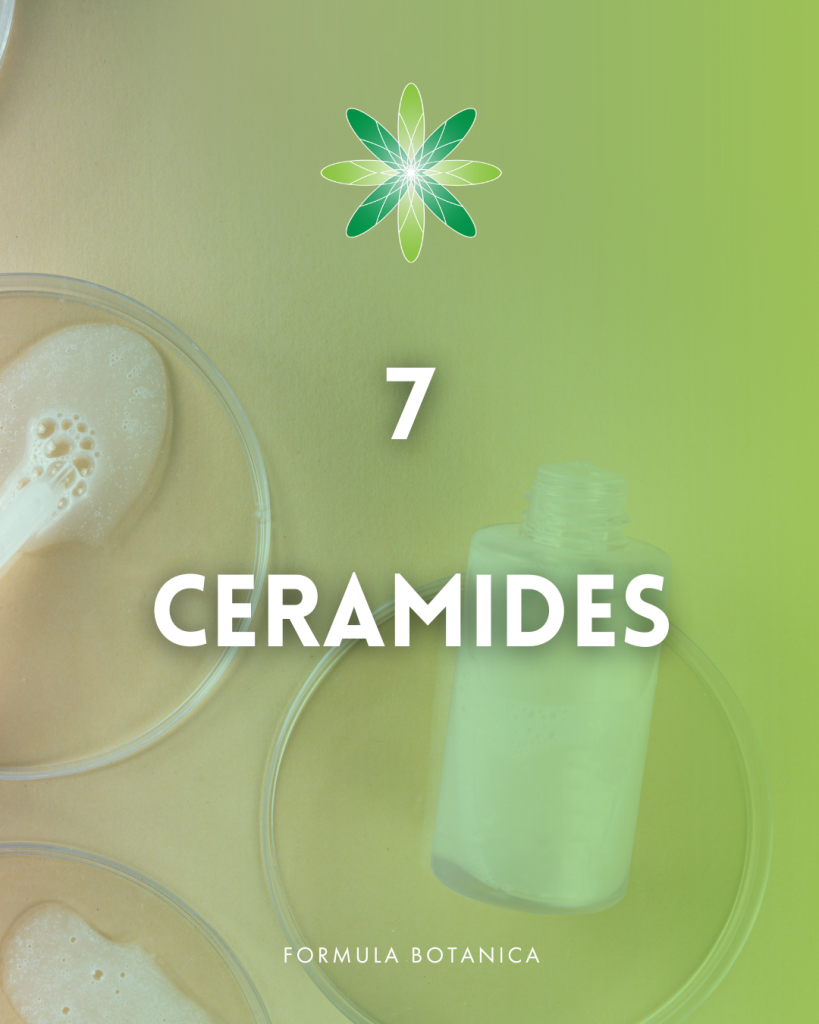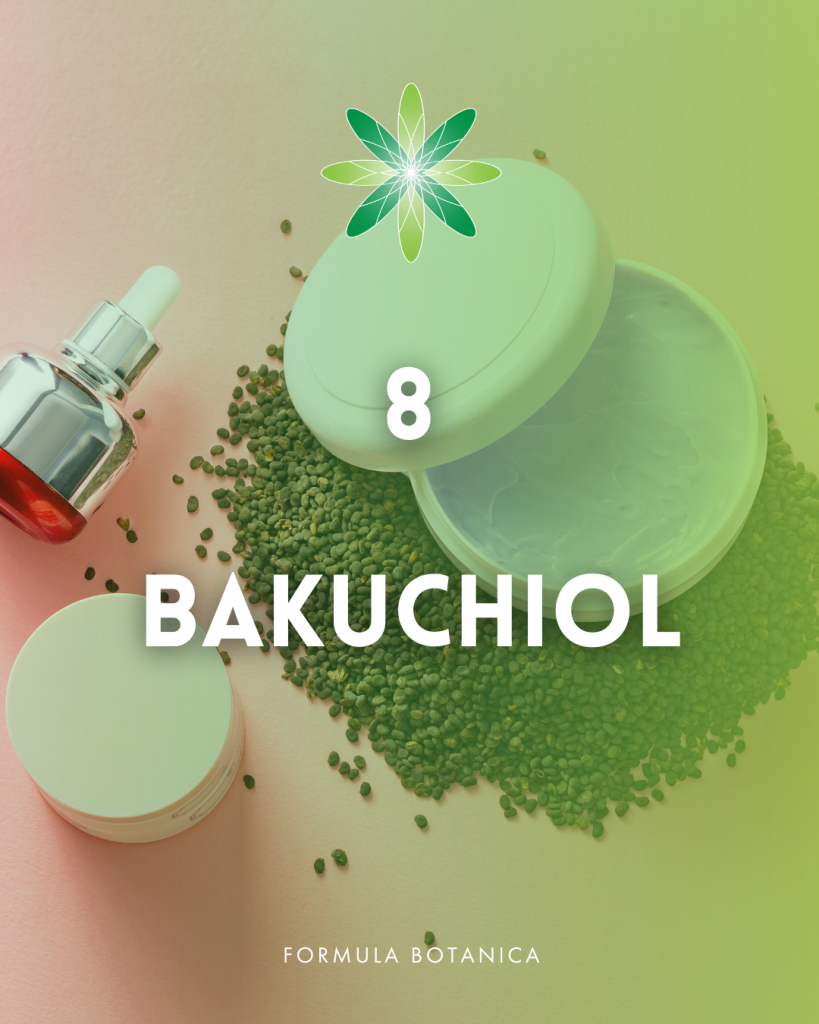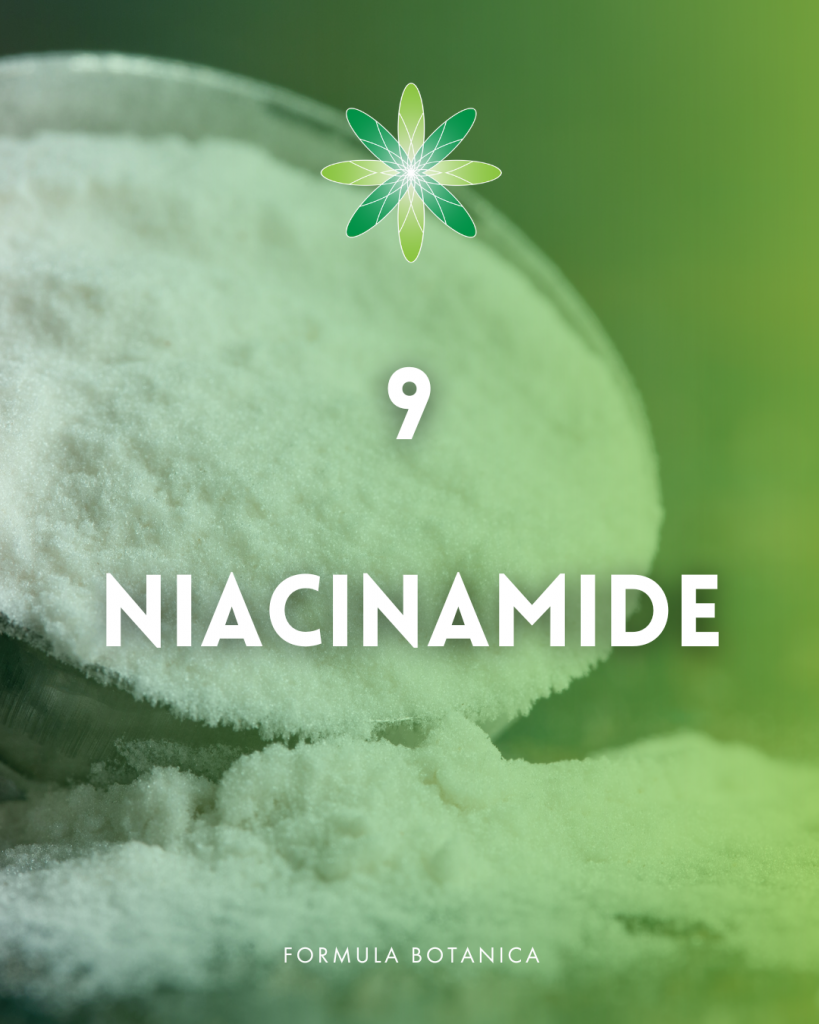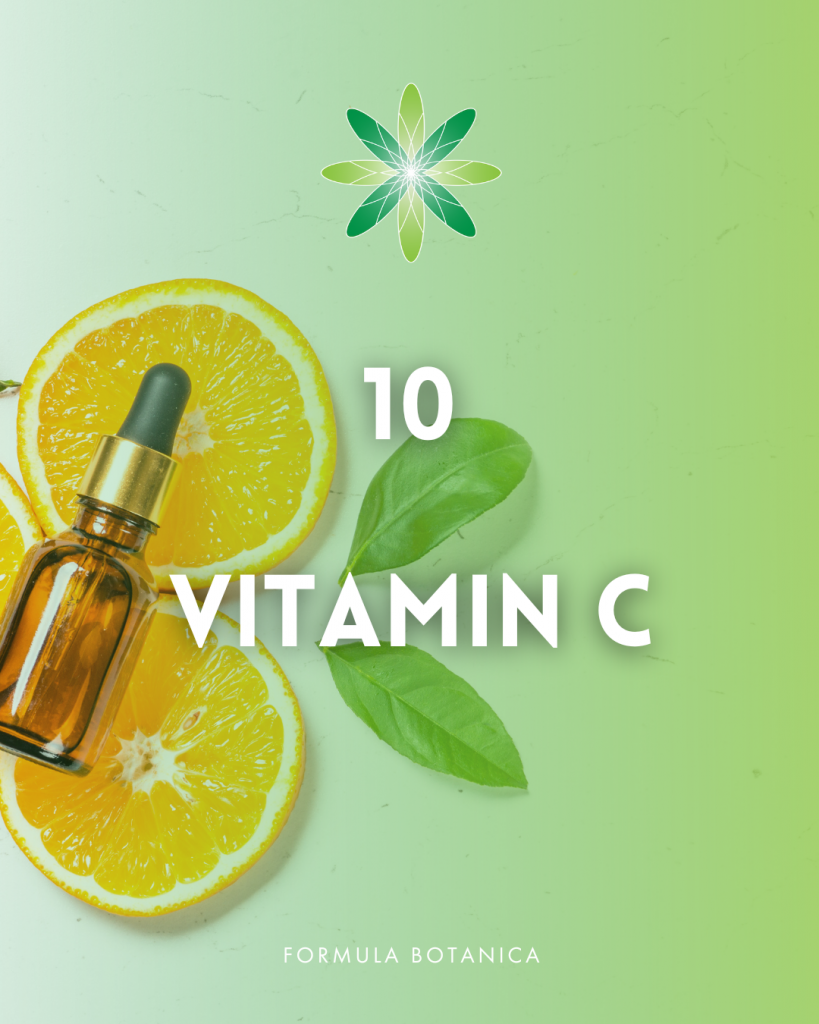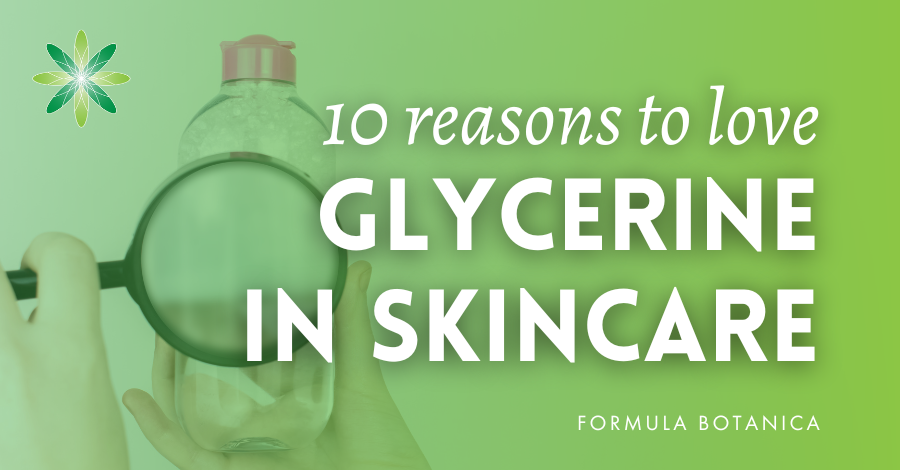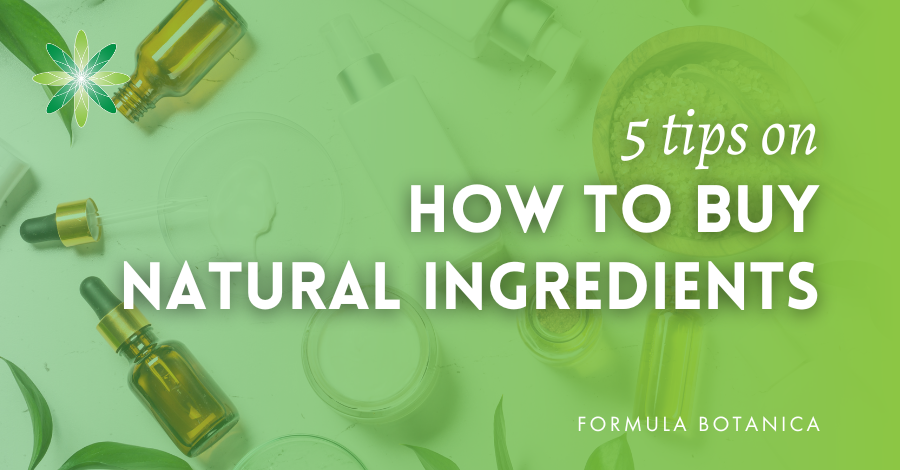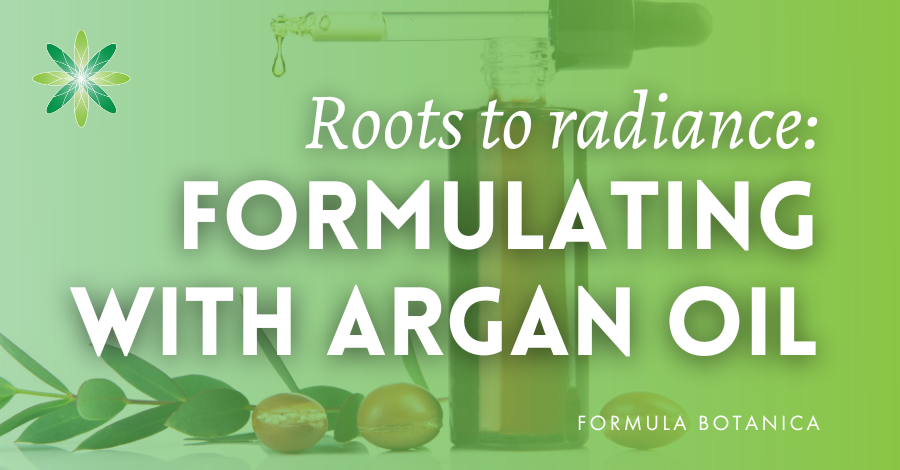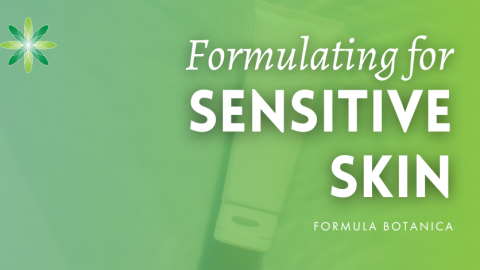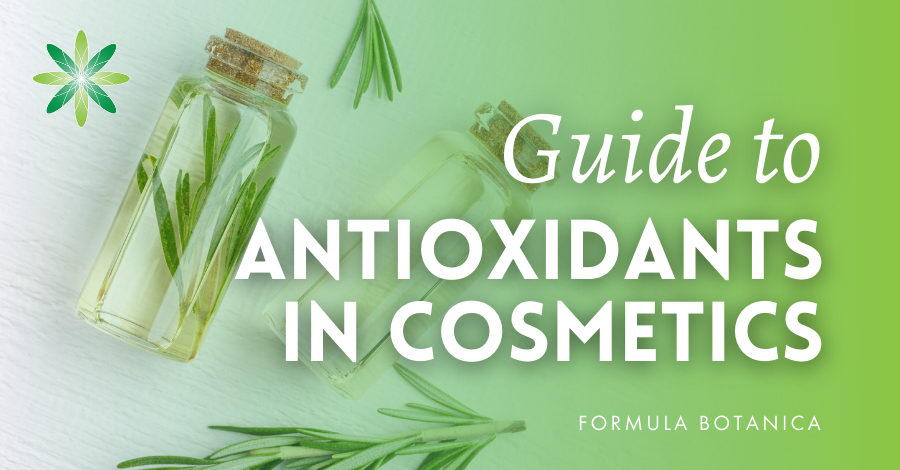There is a myth that natural cosmetic ingredients are not as high-performance nor science-backed as their synthetic counterparts. Many people like the concept of using natural ingredients and of their cosmetics having a more direct connection to nature, but feel that the efficacy of natural skincare or haircare is not backed by hard science.
They simply “don’t do natural”, they only “do science”. There is a belief that science and natural ingredients are opposing poles; how wrong this assumption is.
Let’s start by saying loudly and clearly that any cosmetic ingredient can be science-backed. Whether natural, nature-derived, nature-identical, biotech or synthetic in part or full, any ingredient and its inherent properties can have evidence to support its skincare and haircare benefits.
At this point, you may be confused by what natural means. We recommend you head over to listen to some of our podcasts on the topic, including the very first episode of our Green Beauty Conversations podcast in which we dive into the four shades of natural:
Episode 1: What does natural skincare mean?;
Episode 8: Why 100% natural claims could get you into trouble
Episode 189: Biotech ingredient wars revolutionising cosmetics
In this blog post, we look at the hot topic of evidence-backed claims for cosmetic ingredients. We give you our top 10 must-have, high-performance natural ingredients with efficacious properties of benefit to natural cosmetics. Whether you are a beginner or an experienced formulator, you’ll want to get your hands on these.
What are science-backed ingredients?
Navigating the topic of ‘science-backed’ ingredients can be somewhat confusing, given the rampant science-washing behind this term. Just because there are scientific studies about an ingredient doesn’t mean that its properties are automatically backed by science, despite what the mainstream beauty industry wants us to believe. So what does it actually mean to have your ingredients backed by science?
Well, science-backed ingredients are ingredients that have been extensively researched and studied in order to provide a body of scientific evidence to support their efficacy and safety. When researching ingredients, you’ll find different levels of evidence in research papers and clinical studies including:
- In vitro studies: Also known as test-tube experiments, in vitro studies are conducted outside of living organisms, typically within test tubes or petri dishes, to investigate the biological properties of an ingredient. These experiments aim to identify the properties of an ingredient within isolated cells or microorganisms, observing their reaction and identifying any triggered mechanisms. While often the initial step in ingredient analysis, these studies alone aren’t enough to establish the efficacy of an ingredient.
- Ex vivo studies: While ex vivo studies tend to be rarer, you can sometimes find them when researching an ingredient. These tests are performed on tissues outside of living organisms, aka dead animal or human skin, to see how an ingredient reacts, or penetrates the skin. While these tests provide more detail than an in vitro study, they are still not comprehensive enough as an ingredient will behave differently when used on a living person.
- In vivo studies: Next, you’ve got in vivo studies, which are performed on live animals or humans. Since animal testing for cosmetics has been banned in the EU since 2013, these tests are often performed on humans. The results of these studies give you more information on the efficacy and properties of an ingredient.
- Clinical studies: Clinical studies are the studies that will provide you with the most realistic results. During these studies, ingredients are tested on live volunteers. The more volunteers you have, the more relevant the data is.
- Review studies: Last but not least, you can gather information from review studies. You can often find other studies linked within an article. Look for peer-reviewed articles as they’ve been assessed by unbiased peers.
When researching the efficacy of an ingredient, you also need to answer the following questions:
- What was the experiment and method used?
- What material was used? At which concentration?
- How was the material applied? To how many subjects?
- Was it reviewed? By whom?
- What was the conclusion?
We teach you more about researching natural ingredients and interpreting information from scientific and clinical studies in our award-winning courses. Remember, it is normal to be left with more questions than answers when researching an ingredient. After all, few things are really proven by science and science is constantly evolving.
When you review scientific studies on ingredients, you will need to read the fine details. It is likely that the conclusions of the research will be worded to indicate that the body of evidence suggests an ingredient may have certain properties with cosmetic benefits. More often than not, studies will conclude that more research is needed to confirm those benefits.
Cosmetic claims have long been subject to legal scrutiny in jurisdictions such as the European Union, but now we’ve seen a rise in “skintellectuals” – informed, curious beauty consumers – cosmetics firms are even more aware of the need to provide open, transparent scientific evidence about the performance of their ingredients that everyone can understand.
Learn more about transparency and claims in this episode:
Episode 119: Taking cosmetics transparency to the next level
The problems behind science-backed claims
While science-backed ingredients might sound wonderful, there is an element of science-washing rife in the industry. Science-washing means a company uses the word “science” as a marketing term to boost their credentials and their sales. We cover this trend in our podcast:
Episode 209: Medical skincare – marketing hype vs scientific reality
This doesn’t mean you shouldn’t use the term when including ingredients with science-backed properties of proven benefit in cosmetics. In fact, the first thing we teach our students at Formula Botanica is to research their ingredients and suppliers thoroughly to ensure they know what they are buying, why they are including it in a formulation, and, above all, whether they can use any terms like ‘science-backed’ or other such claims. The ability to research diligently is one of the most important skills you can have as an organic formulator.
It is important also to know that just because you include in your formulation a science-backed ingredient with claims and benefits, it doesn’t mean that your finished formulation can make the same claims. Ingredients work in synergy and differently when together in formulations, and the benefits of one ingredient may not translate in full or in part, or at all, to the finished cosmetic product. This point can be made for both natural and synthetic ingredients.
You would need to have your cosmetic formulation tested and undergo trials to ascertain any efficacy claims you wish to make for it. Just be aware of this when writing product descriptions if you intend to market and sell your natural, organic skincare or haircare.
But, of course, individual natural ingredients most certainly do have science-based evidence to show they are worth their weight in gold in your natural formulations. So, let’s dive in to our top 10 must-have, science-backed ingredients you can use to elevate your formulations.
Our top 10 natural science-backed ingredients
Here are our top 10 favourite natural ingredients backed by science, which we think everyone should have in their formulation cupboard. All the ingredients below are easy to find, easy to source, and easy to formulate with.
Jojoba oil
Our first pick is jojoba oil. Derived from the seeds of the jojoba plant, this golden oil is a skincare favourite among many formulators, as it is an excellent emollient and moisturiser. Jojoba’s unique composition – compatible with our skin’s sebum – and exceptional stability sets it apart from other plant-based oils, making it a must-have ingredient when it comes to formulating moisturising products.
Scientific studies suggest that this liquid wax has anti-inflammatory, antimicrobial and antifungal activities (i), making it a great addition to your skincare and haircare products. Additionally, this oil can extend the shelf life of your products on account of its high amounts of vitamin E, which is antioxidant.
Add jojoba oil to your formulations to improve skin barrier function and reduce skin dryness. So versatile is jojoba, you can include it in almost any type of formulation from serums, moisturisers and lip balms to lotion bars and hair conditioners. See this post for more insights into jojoba oil:
Rosehip oil
Derived from rosehips, this reddish-orange oil has been used as a cosmetic for centuries and is widely recognised for its regenerative and scar-reducing properties.
Used as a moisturising ingredient in skincare formulations, rosehip oil is one of the greatest natural sources of alpha-linolenic acid. Its anti-inflammatory and antioxidant properties can help repair the skin barrier, alleviate the symptoms of dry skin, and boost collagen production. Studies also suggest that rosehip oil may help reduce scars (ii). However, the evidence so far is insufficient and more research is needed to prove its alleged properties. As a heat-sensitive oil, try incorporating it in the cool-down phase of your body lotions, face balms, and lotion bars. Find out more about rosehip oil below:
Squalane
It is impossible to talk about science-backed botanical oils without mentioning squalene and squalane. Squalene is a naturally occurring lipid in the skin sebum and can be found in cosmetics as an emollient. However, it is highly unstable, which is why we recommend you use squalane instead, the hydrogenated version of squalene.
Studies have suggested that squalene can help repair the skin’s lipid barrier and transepidermal water loss, which is the evaporation of water from the skin’s surface (iii). As for squalane, studies suggest that it can be beneficial for mature skin as it may help restore skin suppleness and flexibility (iii). However, more scientific research and clinical evidence is needed to confirm these properties.
Add it to the oil phase of your skincare or haircare preparations, such as face creams, serums, balms and oils. If you want to find out more about the difference between squalane and squalene, see our guide, and try both ingredients out in our free formulation:
Rosemary
Rosemary is one of the most effective natural ingredients out there and has been used in skincare, haircare and folklore remedies since well before the first herbals were written. There is plenty of research to support its antioxidant and antimicrobial properties (iv).
Rich in antioxidants, rosemary extract can protect the skin and hair from free radical damage, which causes premature ageing and damaged hair. It also contains powerful anti-inflammatory properties making it ideal for inclusion in cosmetics targeting sensitive skin and irritated scalps.
Rosemary’s astringent properties can also help tone the skin, and its antimicrobial properties can help counteract excess hair and scalp oil. Use rosemary essential oil, powder or CO2 extract in your shampoos, conditioners, deodorants and balms. Find out more about rosemary in our guide and free formulation:
Rosemary: the formulator’s secret cosmetic ingredient
Revitalise your locks: make a rosemary hair and scalp oil
Green Tea
A popular drink, it is also a popular cosmetic ingredient, renowned for its high antioxidant content that helps work on the visible signs of the skin’s premature ageing.
This ingredient’s high catechin content (a class of antioxidants) makes it a great addition to mature skincare as it helps fight free radicals and inhibits the breakdown of collagen, which, in turn, helps maintain the skin’s firmness and elasticity (v).
Green tea also has anti-inflammatory properties, which help improve dry and damaged scalp. Add green tea powder, oil or hydrosol to your toners, eye creams and face serums. Find out more about the properties of green tea:
Hyaluronic acid
Hyaluronic acid is one of the most popular, science-backed ingredients right now. Naturally present in our dermis (our second skin layer), hyaluronic acid is responsible for skin hydration and helps enhance firmness and elasticity. However, its content decreases with age, which impairs the skin’s capacity to retain water, and can lead to skin dehydration. This is when cosmetic hyaluronic acid comes in.
As an ingredient, hyaluronic acid is a powerful humectant (attracting and binding to water molecules) that helps maintain the skin’s water content to keep it hydrated and visibly plumped and it also works on reducing the breakdown of collagen (vi). This hydrating ingredient can also help improve the skin’s suppleness, and elasticity, therefore reducing the signs of ageing.
Use hyaluronic acid powder in your hydrating gels and emulsions. You can pick between different molecular weights available, depending on the results you want. Low molecular weight hyaluronic acid can penetrate deeper into the skin, offering lasting hydration, while high molecular weight hyaluronic acid creates a protective barrier on the skin’s surface and can help plump the skin. We recommend using a mix of both to deliver immediate and long-term hydration.
Find out more about hyaluronic acid below:
Hydration revolution: formulator’s guide to hyaluronic acid
The formulator’s guide to humectants
Ceramides
Ceramides are powerful barrier-repair agents which help prevent water loss and dehydration. Naturally present in the skin, their content decreases with age, which can lead to transepidermal water loss and compromise the skin’s barrier function.
Adding ceramides to your cosmetic formulations can help increase skin hydration, and improve and maintain the skin barrier function (vii). Ceramides can also protect and give shine to damaged hair.
Most ceramides need to be heated within the oil phase of the formulation, while some come pre-diluted in oil. There are also some water-soluble forms available, which are usually added in the heated water phase of the formulation. Ask your supplier how to incorporate ceramides in your formulation, as they will have performed tests to find the most effective method.
Bakuchiol
Bakuchiol is a trending, science-backed ingredients that is often referred to as “nature’s retinol”. Bakuchiol is isolated from the babchi plant, and presents similar benefits to retinol, but without the potential for the irritating side effects that are associated with retinol itself.
A natural alternative to retinol, bakuchiol is a powerful antioxidant that stimulates collagen production, which, in turn, helps reduce signs of ageing and increase skin elasticity (viii). Unlike retinol, it can be used during the day and is better tolerated by the skin. Try adding it to anti-ageing formulations such as creams and serums. You can find out more about bakuchiol below:
Top 5 natural retinol alternatives and why you should use them
Niacinamide
Niacinamide, an active form of B3, and while niacinamide isn’t a natural ingredient, it has many interesting benefits that aren’t found in other ingredients.
This ingredient is well-tolerated by all skin types and is shown to improve skin barrier function, increase the skin’s elasticity and help reduce signs of premature skin ageing such as wrinkles and fine lines (ix). Niacinamide can also impact sebum production and anti-inflammatory action, but the mechanism for this remains unknown and more research is needed to confirm this. Niacinamide may also help mitigate the appearance of hyperpigmentation and age spots. Add niacinamide powder to your water-based emulsions, like your serums, lotions and creams.
These posts cover some aspects of working with niacinamide, for instance alongside vitamin C.
4 Vitamin C myths every formulator should know
How to formulate a vitamin B micellar water
Vitamin C
Last, but certainly not least, vitamin C is a must-have ingredient for any formulator. We recommend you experiment with vitamin C derivatives, which are easier to formulate with and are more stable than pure vitamin C (ascorbic acid).
The most common vitamin C derivatives are esters, which present similar antioxidant benefits to ascorbic acid. Studies have shown that these derivatives aren’t as sensitive to oxidation, are more stable, and are less irritating on the skin than actual vitamin C (x). You can add esters to your water-based or oil-based formulations. If you’re a beginner formulator, experiment with oil-soluble esters first, like ascorbyl palmitate, and add it to your balms and oils. Find out more about vitamin C below:
The benefits of vitamin C for skincare
The best forms of vitamin C in skincare
The appeal of science-backed ingredients
In recent years, there’s been a seismic shift towards science-backed ingredients. Beauty consumers are now demanding concrete evidence for product efficacy, shunning anecdotal claims and marketing hype. This surge has sparked a rise in scientific studies and clinical trials, validating the cosmetic benefits of specific ingredients, and leading to more research. On top of that, science has shown a bigger interest in natural materials in recent years, leading to more research on these ingredients in particular.
For formulators like you, this is a golden opportunity. You can harness the power of science-backed natural ingredients to craft formulations that are both safe and effective. Take your pick from our top 10 ingredients above to unlock a world of high-performance botanicals.
References and further reading
(i) Biol Res., 2017. A review on plant importance, biotechnological aspects, and cultivation challenges of jojoba plant
(ii) Belkhelladi et al, 2023. Rosehip extract and wound healing: a review
(iii) Kim et al, 2012. Biological importance and applications of squalene and squalane
(iv) González-Minero et al, 2020. Rosemary: an ancient plant with uses in personal healthcare and cosmetics
(v) Roh et al, 2017. Molecular mechanisms of green tea polyphenols with protective effects against skin photoaging
(vi) Bravo et al, 2022. Benefits of topical hyaluronic acid for skin quality and signs of skin ageing: from literature review to clinical evidence
(vii) Kahraman et al, 2019. Recent advances on topical applications of ceramides to restore barrier function of the skin
(viii) Dhaliwal et al, 2018. Prospective, randomized, double-blind assessment of topical bakuchiol and retinol for facial photoaging
(ix) Wohlrab et al, 2014. Niacinamide- mechanisms of action and its topical use in dermatology
(x) ) Enescu et al, 2021. A review of topical vitamin C derivatives and their efficacy
FREE TRAINING
Learn how to become an
Organic Skincare Formulator
FREE TRAINING
How to become an
Organic Skincare Entrepreneur
FREE TRAINING
How to become an
Organic Skincare Entrepreneur
Leave us a comment

Ariane is Formula Botanica’s Content Creator and an active member of the student community. She has worked as a professional journalist, blogger, copywriter and editor before joining Formula Botanica full-time in 2024.

